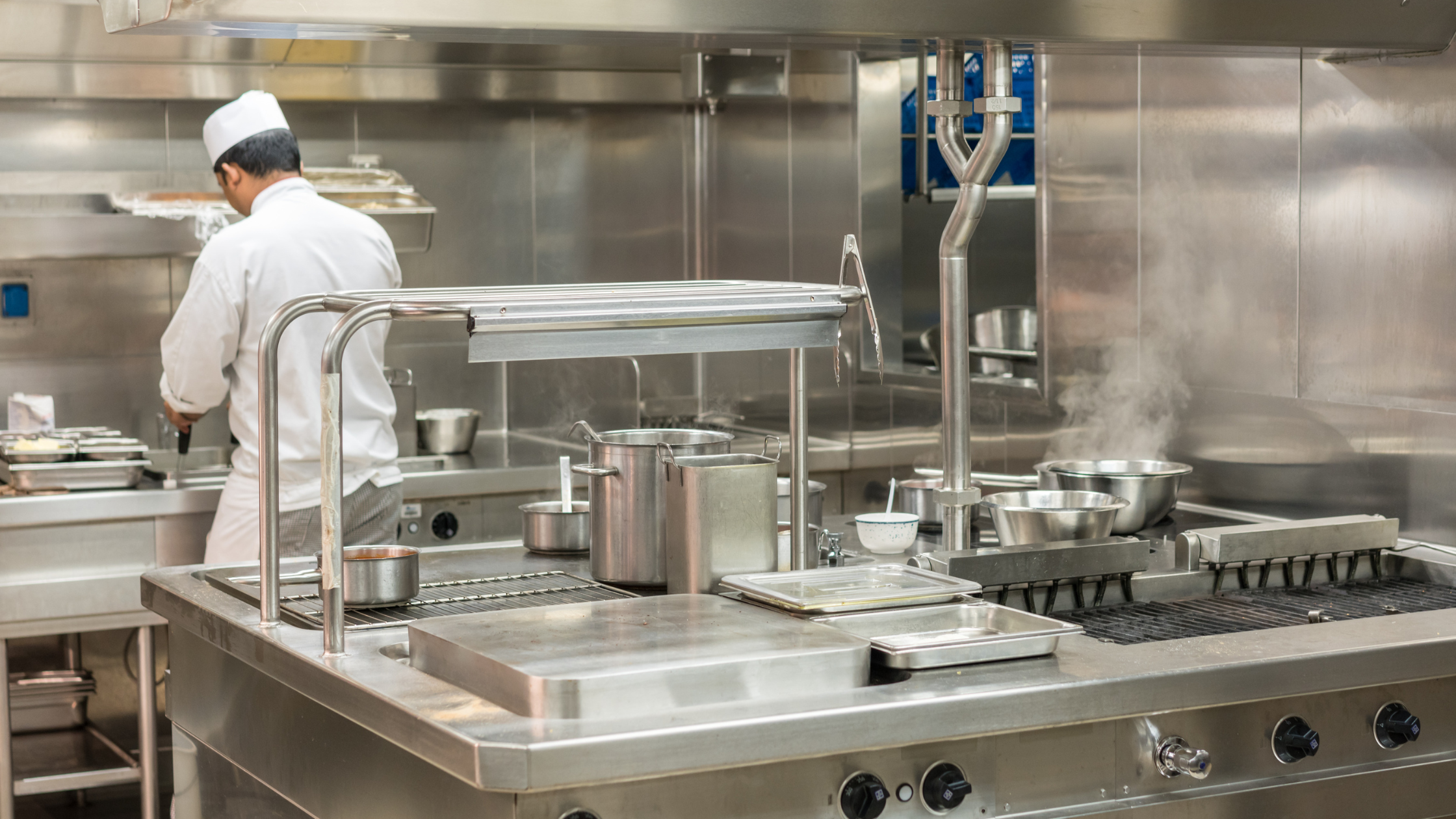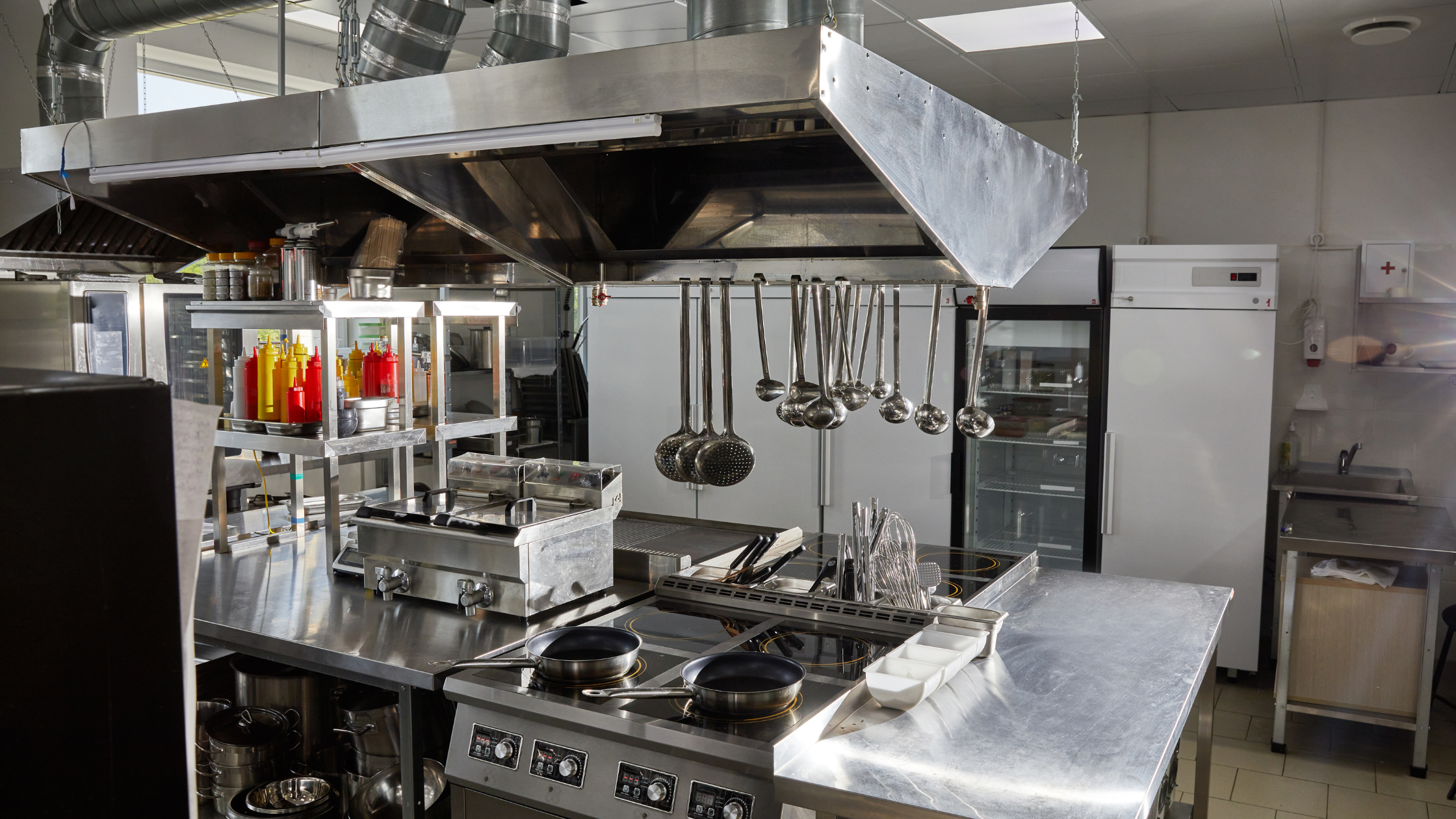Commercial kitchens are bustling hubs of activity, where culinary creativity meets the demands of a hungry clientele. However, behind the scenes, chefs and kitchen staff often face a myriad of challenges that can impact efficiency, productivity, and the overall dining experience. In this article, we will explore some common challenges in commercial kitchens and discuss effective strategies to overcome them.
Limited Space
One of the primary challenges in commercial kitchens is the limited space. Chefs and kitchen staff often find themselves working in cramped environments, leading to inefficiencies and safety concerns. To overcome this challenge, it’s essential to optimize the kitchen layout. Investing in space-saving commercial kitchen equipment, such as stackable appliances and multifunctional workstations, can significantly improve workflow. Additionally, implementing a well-organized storage system and regular decluttering can help maximize available space.
Staff Turnover
High turnover rates are prevalent in the hospitality industry, and commercial kitchens are no exception. The constant influx of new personnel can disrupt the harmony of a well-established kitchen team. To address this challenge, prioritize employee training and create a positive work environment. Offering competitive wages, employee benefits, and opportunities for career advancement can enhance staff retention. Moreover, fostering a sense of camaraderie through team-building activities can contribute to a more cohesive kitchen staff.
Food Safety Compliance
Maintaining strict adherence to food safety standards is non-negotiable in commercial kitchens. Failure to comply with regulations can result in severe consequences, including fines and damage to the establishment’s reputation. Overcoming this challenge requires comprehensive staff training on food safety protocols, regular inspections, and the implementation of technology such as temperature monitoring systems. Establishing a culture of accountability and continuous improvement can help prevent lapses in food safety practices.

Equipment Breakdowns
Commercial kitchens heavily rely on a multitude of equipment, from ovens and grills to refrigerators and dishwashers. Equipment breakdowns can disrupt operations, leading to delays and customer dissatisfaction. To overcome this challenge, implement a proactive maintenance schedule. Regularly servicing and inspecting commercial kitchen equipments can help identify potential issues before they escalate. Additionally, having contingency plans, such as backup equipment or access to a reliable repair service, can minimize downtime during unexpected breakdowns.
Menu Consistency
Maintaining consistency in menu items is crucial for building customer trust and satisfaction. However, achieving this consistency can be challenging, especially in high-demand settings. Overcoming this challenge involves meticulous recipe documentation and standardized cooking procedures. Regular training sessions for kitchen staff on recipe execution and portion control can contribute to consistent quality across dishes. Moreover, regularly soliciting and implementing feedback from both staff and customers can help identify and address any deviations from the established standards.
Supply Chain Disruptions
In an interconnected global economy, supply chain disruptions are increasingly common. Commercial kitchens, reliant on a steady stream of fresh ingredients, are particularly vulnerable to these disruptions. To navigate this challenge, establish strong relationships with reliable suppliers and diversify sourcing when possible. Maintaining an inventory management system that allows for real-time tracking of stock levels can help anticipate and mitigate potential shortages. Additionally, having backup suppliers and exploring local sourcing options can provide resilience in the face of unforeseen disruptions.
Communication Breakdowns
Effective communication is the backbone of any successful kitchen operation. Miscommunication can lead to errors, delays, and compromised customer satisfaction. Overcoming this challenge involves implementing clear communication protocols and fostering an open dialogue among kitchen staff. Utilizing communication tools such as kitchen display systems (KDS) and ensuring that everyone is well-versed in kitchen terminology can streamline operations. Regular team meetings and feedback sessions can further enhance communication and strengthen the overall cohesion of the kitchen team.
Commercial kitchens are dynamic environments where culinary excellence meets operational challenges. By proactively addressing common issues such as limited space, staff turnover, food safety compliance, equipment breakdowns, menu consistency, supply chain disruptions, and communication breakdowns, kitchen managers and chefs can create a more efficient and resilient workspace. Embracing a proactive mindset, investing in employee training, and leveraging technology are key components in overcoming these challenges and ensuring a smooth and successful operation in the competitive world of commercial kitchens.
Why is cross-training essential in commercial kitchens, and how can it be implemented effectively?
Cross-training is crucial in commercial kitchens to ensure flexibility and efficiency among kitchen staff. When employees are trained in multiple roles, it helps mitigate the impact of staff shortages, reduces bottlenecks, and enhances overall teamwork. Implementing effective cross-training involves creating a comprehensive training program, providing hands-on experience in different roles, and regularly assessing staff proficiency in each area.
How can commercial kitchens stay environmentally sustainable while addressing operational challenges?
Maintaining environmental sustainability in commercial kitchens is essential for long-term success. To achieve this, kitchens can adopt eco-friendly practices such as minimizing food waste, using energy-efficient appliances, and sourcing ingredients locally to reduce the carbon footprint. Additionally, implementing recycling programs, composting, and exploring sustainable packaging options contribute to a more environmentally conscious operation.
What role does technology play in streamlining communication within a commercial kitchen, and what are some recommended tools?
Technology plays a significant role in enhancing communication within commercial kitchens. Implementing kitchen display systems (KDS), order management software, and communication apps can streamline the flow of information between chefs, kitchen staff, and servers. These tools help reduce errors, enhance order accuracy, and contribute to a more efficient and organized kitchen operation.
How can commercial kitchens adapt to changing dietary trends and customer preferences without compromising menu consistency?
Adapting to changing dietary trends while maintaining menu consistency requires a strategic approach. Chefs can regularly review and update menus to incorporate trending ingredients or offer flexible menu options. Engaging with customers through surveys or social media can provide valuable insights into evolving preferences. Additionally, maintaining a versatile kitchen staff that is well-trained in diverse culinary techniques allows for a seamless integration of new menu items without sacrificing consistency.
What strategies can commercial kitchens employ to foster a positive and inclusive work environment for diverse kitchen staff?
Creating a positive and inclusive work environment is crucial for retaining a diverse kitchen staff. Kitchen managers can implement diversity training programs, promote open communication, and celebrate cultural diversity within the team. Establishing a zero-tolerance policy for discrimination, providing equal opportunities for professional development, and recognizing the unique contributions of each team member contribute to a workplace culture that values diversity and fosters a sense of belonging.
